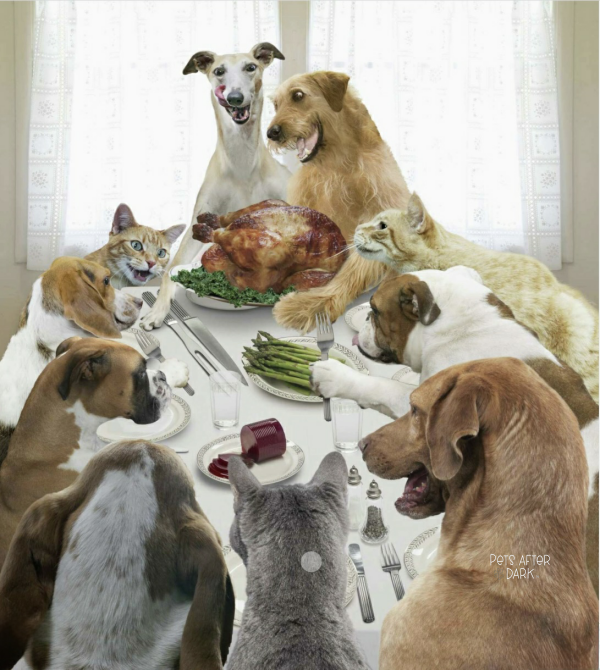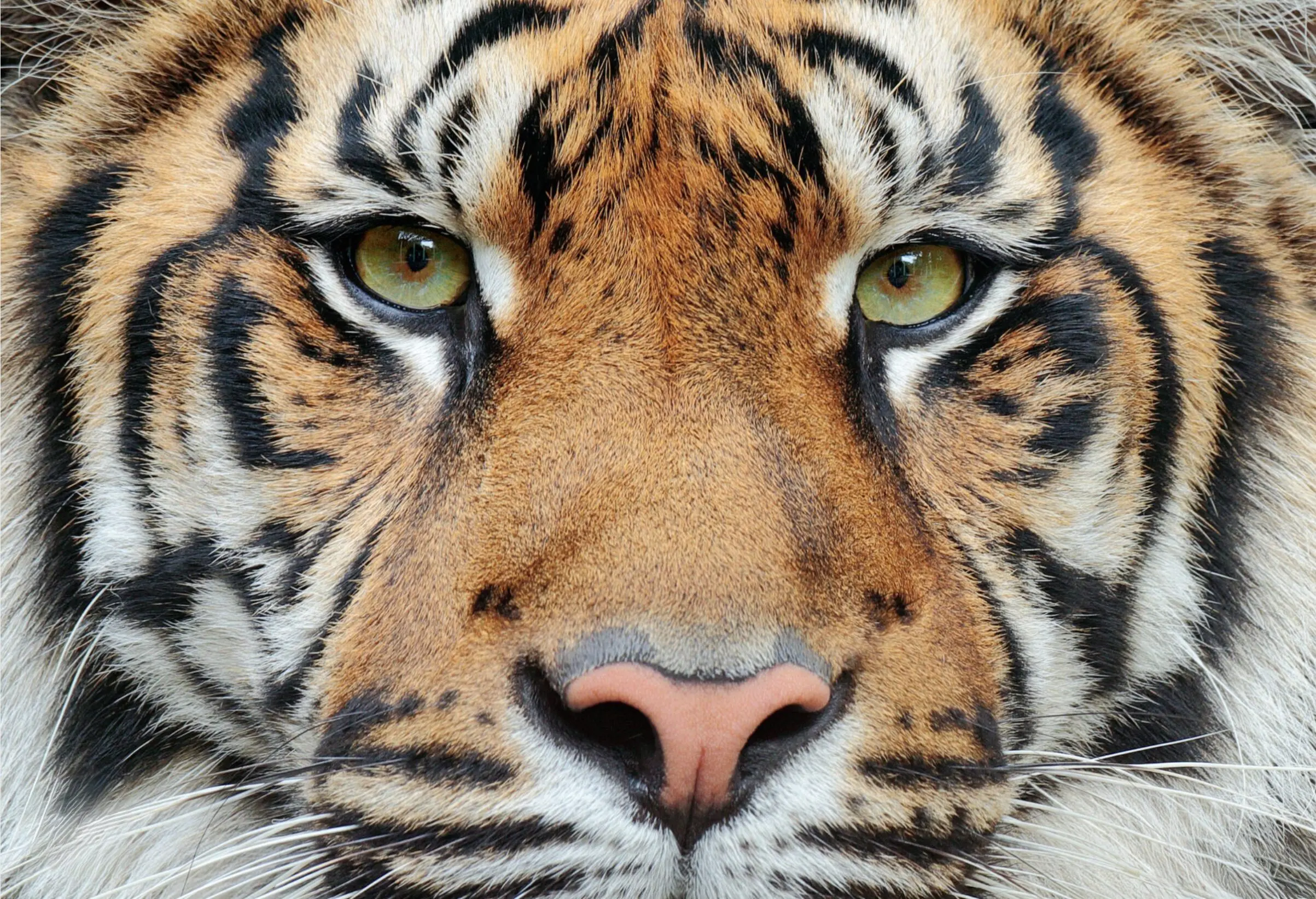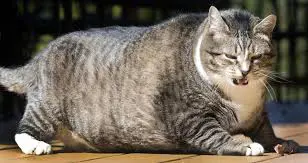
Holiday Joy for Pets: The ‘Yes, They Can Have That’ Edition
Every year around this time pet owners are warned about toxic foods and holiday hazards. And while it’s important to
Weeknights 7PM - Midnight
Weekends 8AM - Midnight

There’s something fascinating about how differently dogs and cats have responded to domestication. Dogs have been selectively bred for thousands of years, and it shows—they look nothing like their wolf ancestors. We’ve created Chihuahuas and Great Danes, pugs and greyhounds, each breed dramatically different in size, shape, and temperament. Along the way, dogs became deeply attuned to human communication, reading our facial expressions and responding to our gestures in ways wolves simply don’t.
Cats, on the other hand? They look almost identical to their wild ancestors. A tabby cat sitting on your couch has essentially the same body structure, size, and appearance as the African wildcat from which all domestic cats descended. And their behavior hasn’t changed nearly as much either. Watch a housecat stalk a toy mouse, and you’re seeing the same hunting sequence a tiger uses. The way your cat patrols the house, marks territory by rubbing, and prefers to be active at dawn and dusk—these are all behaviors you’d observe in lions and other wild felids.
This difference matters more than we might think. Dogs have evolved to fit into our human world. Cats have simply agreed to live alongside us while remaining, in many ways, wild animals at heart. And that’s exactly why so many indoor cats struggle when we treat them like small dogs or expect them to be content in an environment that ignores their fundamental nature.
Our feline patients have it pretty good in many ways. They’re safe from predators, traffic, and infectious diseases. They have regular meals, comfortable beds, and humans who care about them. Yet we still see indoor cats struggling with obesity, anxiety, inappropriate elimination, and stress-related illness.
The disconnect is this: we’ve given cats physical safety, but we haven’t always given them what they need psychologically and behaviorally.


Indoor cats have significantly higher rates of obesity than outdoor cats—studies show 25-35% are overweight. The combination of free-feeding, calorie-dense food, and insufficient activity leads to weight gain, which increases their risk for diabetes, hepatic lipidosis, urinary disease, and arthritis.
I’ve seen plenty of overweight cats whose owners genuinely didn’t realize there was a problem until we talked about body condition scoring. It creeps up gradually, and before you know it, a cat who should weigh 10 pounds weighs 15 (or even 25!).
Inappropriate elimination is one of the most common reasons cats are relinquished to shelters, and it’s heartbreaking because it’s often fixable. After ruling out medical causes, we usually find that environmental factors play a key role: not enough boxes, boxes that are too small or covered, boxes placed in high-traffic or noisy areas, or litter that’s scented or not scooped regularly enough.
The standard recommendation is one litter box per cat, plus one extra. Boxes should be large—about 1.5 times the cat’s length—and placed in quiet (ie away from noisy appliances), accessible spots. Most cats prefer unscented clumping litter in uncovered boxes although some cats can have different preferences and trying something new when they’re a problem is never a bad idea.
Chronic stress manifests differently in cats than in people. We see overgrooming that leads to hair loss, stress-induced bladder inflammation (feline idiopathic cystitis) or a herpes flare, hiding behavior, decreased appetite, or aggression toward people or other pets.
I’ve had cases where cats with recurrent bladder issues improved dramatically just from environmental changes—adding vertical space, increasing play time, providing more litter boxes. Sometimes what looks like a medical problem is actually an environmental one.
The American Association of Feline Practitioners identified five key elements cats need:
1. Provide a Safe Place: Cats need spots where they can retreat and feel secure, preferably elevated. This is especially important in homes with multiple pets or young children.
2. Provide Multiple and Separated Key Resources: Food, water, litter boxes, scratching posts, and resting areas should be distributed throughout the home, not concentrated in one area. In multi-cat households, resources shouldn’t be positioned where one cat can block another’s access.
3. Provide Opportunity for Play and Predatory Behavior: Daily interactive play with wand toys satisfies hunting instincts and provides exercise. Puzzle feeders make cats work for their food, which provides mental stimulation and slows eating.
4. Provide Positive, Consistent, and Predictable Human-Cat Interaction: Cats do better with routine and generally prefer to initiate contact rather than having it forced on them.
5. Provide an Environment that Respects the Cat’s Sense of Smell: Cats navigate their world through scent. Synthetic pheromone diffusers like Feliway can help reduce stress. Avoid heavily scented products near litter boxes or feeding areas.
• Address obesity: Switch from free-feeding to measured meals 2-3 times daily. Use puzzle feeders to increase activity. A personal favorite of mine is the Doc & Phoebe Feeder Mice. Aim for 15-30 minutes of interactive play each day.
• Optimize litter boxes: Provide enough boxes (one per cat plus one), use large uncovered boxes with unscented clumping litter, scoop daily, and place them in quiet locations away from food and water.
• Add vertical space: Cat trees, shelves, or window perches let cats climb and observe from height, which helps them feel secure. This is particularly helpful in multi-cat homes.
• Keep things interesting: Rotate toys to maintain novelty. Set up bird feeders outside windows for entertainment. And if you are really willing to go all out for your feline friends, consider adding a Catio!
When we address environmental needs, we often prevent or resolve problems that otherwise lead to medication, chronic illness, or rehoming. Indoor cats can absolutely thrive, but it requires understanding what they need beyond food, water, and shelter.
It’s worth having these conversations with your veterinarian during wellness visits. A few simple changes can make a significant difference in a cat’s quality of life.
By Dr. Caroline Simard-Swimmer
Medical Director and Co-Founder, Pets After Dark
References: • Ellis SLH, et al. AAFP and ISFM Feline Environmental Needs Guidelines. J Feline Med Surg. 2013;15(3):219-230. • Buffington CAT. External and internal influences on disease risk in cats. J Am Vet Med Assoc. 2002;220(7):994-1002. • Lund EM, et al. Prevalence and risk factors for obesity in adult cats from private US veterinary practices. Int J Appl Res Vet Med. 2005;3(2):88-96. • Westropp JL, Buffington CAT. Feline idiopathic cystitis: current understanding of pathophysiology and management. Vet Clin Small Anim. 2004;34(4):1043-1055.

Every year around this time pet owners are warned about toxic foods and holiday hazards. And while it’s important to

Do dogs really experience the same “vacation exhaustion” that we do, even when they’re having fun? Turns out, science says yes—kind of.

The Pet First Aid Kit You’ll Actually Use (Not the 47-Item Amazon Monster List) Over the past two years, our
Pets After Dark is a subscription-based service that provides expert, local after-hours veterinary care.